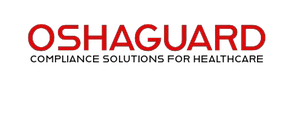One of the more difficult concepts of hearing loss is that it’s referred to as a “cumulative and additive” phenomenon. It’s a slow process that usually results from small exposures over a long period of time. Due to this incremental progression along with the fact that it can be painless, hearing loss can go unnoticed until damage is already extensive and irreversible.
OSHA sets the legal limits on noise exposure in the workplace. These limits are based on an employee’s 8-hour time-weighted average (TWA) over a workday. For noise, OSHA’s permissible exposure limit (PEL) is an 8-hour TWA noise level of 90dB. The time of exposure is reduced by half for each 5dB increase. For example, if an employee was exposed to noise for four hours, the exposure limit would be 95dB.
Most employees, if not all, would fall under the 8-hour time-weighted average since the equipment is only used intermittently and has fluctuations in the actual decibels produced.
However, some research has found that dentists and other dental professionals have diminished hearing compared to their peers in other specialties. Studies reveals that over a 15-year period, individuals have a significant decrease in hearing at high frequencies in both ears, and that this holds true for all ages and genders.
Dentists, hygienists and assistants are exposed to sound patterns that are referred to as “intermittent,” meaning periods of time when there are hazardous levels of sound alternate with periods of time where there are non-hazardous sound levels. The amount of noise which you are exposed to will depend on the type of treatment your practice provides, as well as the equipment that you use. There are several sources of high decibel, high frequency noises present in dental offices including:
- High-speed handpieces - Peak reach 89dB
- Ultrasonic instruments and cleaners - Peak reach 107dB
- High-speed suctions - Peak reach 89dB
- Various lab equipment and devices - Peak reach 96dB
- Motorcycle 95dB, Rock Concert 105-110dB, Firecrackers 145-150dB
We’re certainly not implying that dental facilities are not in compliance with noise standards, but it’s something to consider. Over the years we’ve had numerous employees inquire about a standard for noise or mention the fact that they wear hearing protection to be proactive. Hearing protection can be comfortable and affordable too. Custom made earplugs start around $25 and disposables are only about .12 a pair.
Obviously, this isn’t limited to dentistry. So, be sure to emphasize your commitment to a safe workplace and the importance of communication if an employee has a concern.
